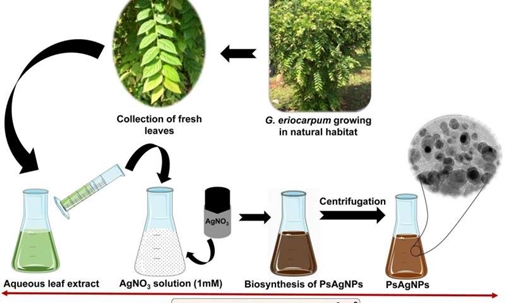|
NOVIDADES
In recent years, a green synthesis approach involving plants has gained great attention with the aim of generating environment-friendly nanoparticles encompassing a vast range of applications. It is obvious from previous reports that very limited efforts have been used to test the efficiency of synthesize silver nanoparticles (AgNPs, but more specifically, biosynthesized AgNPs) against termites, therefore there are significant knowledge gaps about the key role and probable mechanisms of action of AgNPs against termites.  Green synthesis route of PsAgNPs using aqueous leaf extract of G. eriocarpum growing in Xishuangbanna Tropical Botanical Garden. Credit: Sandhya Mishra
The researchers reported the synthesis of AgNPs using leaf extract of Glochidion eriocarpum, a traditional medicinal plant. They provided evidence from laboratory-based experiments showing activities of AgNPs against termites and molecular docking analysis disclosing details of interactions between AgNPs and digestive enzymes. The choice and no-choice bioassays confirmed strong repellent and antifeedant activity of PsAgNPs. Moreover, PsAgNPs exposure caused visible morphological changes in termites. Molecular docking simulation indicated possible attenuation of endoglucanase and bacteria-origin xylanase, digestive enzymes from termite gut, through partial blocking of the catalytic site by AgNPs. "Our preliminary study suggests promising potentials of PsAgNPs for pest management in forestry and agriculture sectors to prevent damages to living trees, wood, crops, etc. More extensive research is recommended to elucidate the environmental compatibility of PsAgNPs," said Prof. Yang Xiaodong, principal investigator of the study. By Zhang Nannan, Chinese Academy of Sciences. Posted: September, 25, 2020. Brasileiros criam tecido antibacteriano. N.E.D. Caballero, P.D. Marcato, O.L. Alves, G.I.H. de Souza and E. Esposito Mechanistic aspects of biosynthesis of silver nanoparticles by several fusarium oxysporum strains, Journal of Nanobiotechnology, Vol. 3, n. 8 (2005).
|
|||||||||||||||||||||||||